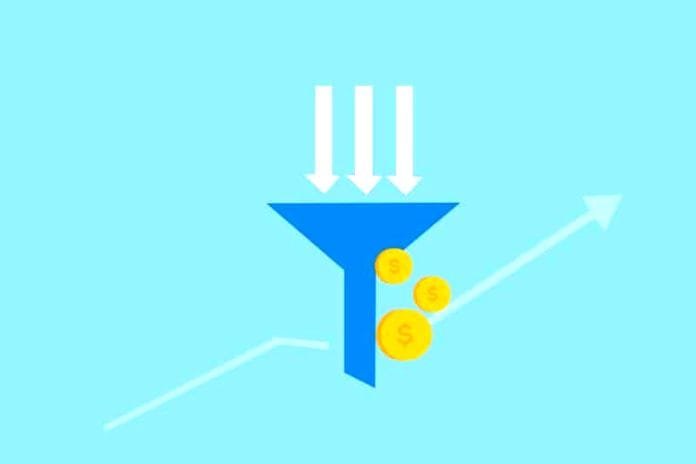Sales Funnel In Digital Marketing: How To Structure?

Sales funnel in digital marketing: When opening a business, the entrepreneur can be confused about what first steps to take to reach a good audience.
In general, one of the most studied subjects at this beginning is the sales funnel. Since when a person opens a company, he has a series of bureaucracies to resolve, mainly related to documentation with the city hall and other public bodies. The part of marketing and understanding how the customer behaves is left out at the beginning.
But they should not because, unlike documentation, marketing is less bureaucratic. It only requires the entrepreneur to study a little on the subject or hire a specialized team, so the investments are carried out correctly.
The sales funnel one of the inbound marketing strategies, that is, attraction marketing, responsible for holding consumers’ attention and turning them into brand customers.
Although the sales funnel is widely used in inbound marketing, its creation is older, being the object of studies by advertisers for over a hundred years and a personalized business plan.
Human beings have been trying to understand consumer behavior for centuries, raising several questions. Among them are the reasons that make a person become a customer of a store about another that sells the same products.
Therefore, the purpose of this article is to present the meaning of a sales funnel, explain its stages, its importance, and some tips to implement it in a business.
Sales Funnel Concept
The sales funnel a marketing strategy that subdivides the customer buying process into different stages. At that time, advertising scholars understood that, for a company to be successful, its marketing strategies must capture customers’ attention and arouse their interest and desire for the product.
Years later, from these studies and initial speculations, the acronym for this process on which the sales funnel is based, AIDA, also known as “Attention, Interest, Desire, and Action,” emerged.
So the sales funnel is the process of getting the attention of a significant percentage of people, where some will be interested in the product. Among those interested, a part will have a desire to buy and will put it into action.
The funnel is represented as an inverted pyramid, with a top, middle, and bottom, where the final part and the smallest part represent the customers who completed their purchases with a company, whatever its branch, even the uniform sale. of a receptionist.
The Stages Of The Sales Funnel
Although the purchase process of a customer is not the same when compared to another consumer or to another moment of purchase by the same person, it is typical that during this process, he will go through conversion steps until he buys the product.
When viewed more simply and generically, the funnel can be subdivided into three stages, as mentioned above.
The Top
The first stage of the sales funnel is the top, the stage that reaches a greater number of customers, being more generic.
In this part, marketing strategies aimed at prospecting customers are concentrated, using a series of channels to promote the company’s products and services.
The brand image is like a business card for architects; it must be very well thought out to attract the desired customers.
The Middle
The middle of the funnel is the phase of turning leads, potential customers who know the company, into real consumers.
At this stage, the entrepreneur must understand the customers’ needs and how to solve them. The middle of the funnel is where the company must raise questions and know how to instigate the person to complete the purchase.
The Background
The bottom of the funnel is the last stage of the customer’s purchase, where he finishes the action and takes the product sold to his house, or the service, for example, a painting and building construction service.
At this stage, the entrepreneur must convince the consumer not to leave the product in the cart without completing the purchase.
Several studies indicate that many people leave products in their cart after spending hours choosing what to bring. Therefore, they do not complete the purchase, even though they have gone through almost the entire funnel. But, with good marketing strategies, it is possible to revert those numbers to real buyers.
Other Stages Of The Sales Funnel
The sales funnel can also be classified more straightforwardly and is divided into more stages, such as:
- Lead prospecting;
- Qualification of leads;
- Assessment of customer problems;
- Presentation of products and services as a solution;
- Negotiation;
- Closing the sale.
A customer can be in any of these stages; it is up to the marketing team or the entrepreneur, in the case of smaller companies, to identify which location the consumer is in.
In the lead prospecting stage, the client does not yet know the name of the company, so the strategy should be to focus on developing its image so that it knows how to identify that the brand sells a certain product, such as a personalized company plate.
Also Read: 7 Digital Marketing Actions To Increase Your Sales


